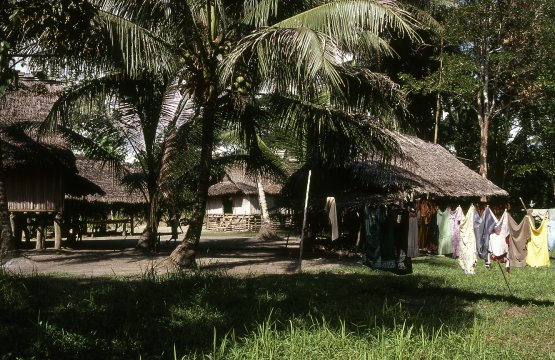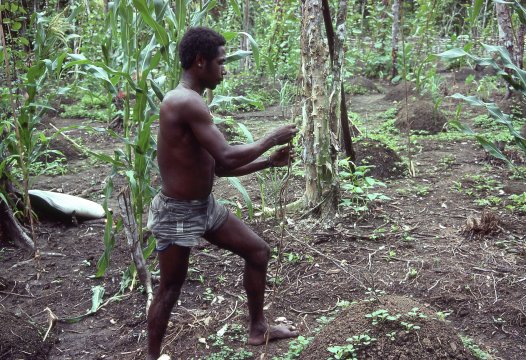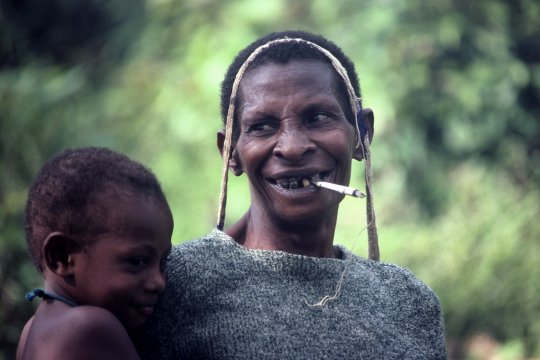|
John Tyman's Cultures in Context Series Torembi and the Sepik A Study of Village Life in New Guinea |
|
Topic No. 12: Tribal Relationships ~ Photos 209 - 220 |
|
John Tyman's Cultures in Context Series Torembi and the Sepik A Study of Village Life in New Guinea |
|
Topic No. 12: Tribal Relationships ~ Photos 209 - 220 |
 |
| 215. In some parts of the village, houses are arranged in groups according to clans and moieties – but elsewhere this is not obvious. |
 |
| 218. And when you grew up, you too (if you were a boy) would have the right to build a house, cultivate a garden and gather food from the forest in areas controlled by your clan. |
 |
| 219. If you were a widow, you would acquire that right through marriage. And if your husband died, you would (like this woman) still be able to scrape sago and grow vegetables on clan lands. |

![]()
Text, photos and recordings
by John Tyman
Intended for Educational Use
Only.
Copyright Pitt Rivers Museum,
Oxford University, 2010.
Contact Dr.
John Tyman for more information regarding licensing.
![]()
Photo processing, Web page layout,
formatting, and complementary research by
William Hillman ~ Brandon, Manitoba
~ Canada
www.hillmanweb.com